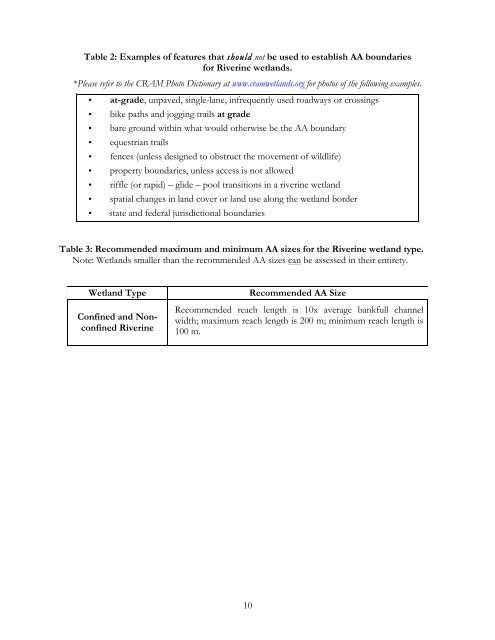Create successful ePaper yourself
Turn your PDF publications into a flip-book with our unique Google optimized e-Paper software.
Table 2: Examples of features that should not be used to establish AA boundaries<br />
for Riverine wetlands.<br />
*Please refer to the CRAM Photo Dictionary at www.cramwetlands.org for photos of the following examples.<br />
• at-grade, unpaved, single-lane, infrequently used roadways or crossings<br />
• bike paths and jogging trails at grade<br />
• bare ground within what would otherwise be the AA boundary<br />
• equestrian trails<br />
• fences (unless designed to obstruct the movement of wildlife)<br />
• property boundaries, unless access is not allowed<br />
• riffle (or rapid) – glide – pool transitions in a riverine wetland<br />
• spatial changes in land cover or land use along the wetland border<br />
• state and federal jurisdictional boundaries<br />
Table 3: Recommended maximum and minimum AA sizes for the Riverine wetland type.<br />
Note: Wetlands smaller than the recommended AA sizes can be assessed in their entirety.<br />
Wetland Type<br />
Confined and Nonconfined<br />
Riverine<br />
Recommended AA Size<br />
Recommended reach length is 10x average bankfull channel<br />
width; maximum reach length is 200 m; minimum reach length is<br />
100 m.<br />
10















